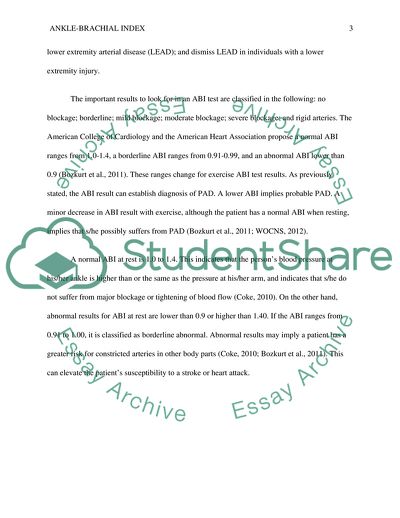ANKLE-BRACHIAL INDEX Assignment Example | Topics and Well Written Essays - 500 words. https://studentshare.org/medical-science/1862625-ankle-brachial-index
ANKLE-BRACHIAL INDEX Assignment Example | Topics and Well Written Essays - 500 Words. https://studentshare.org/medical-science/1862625-ankle-brachial-index.


